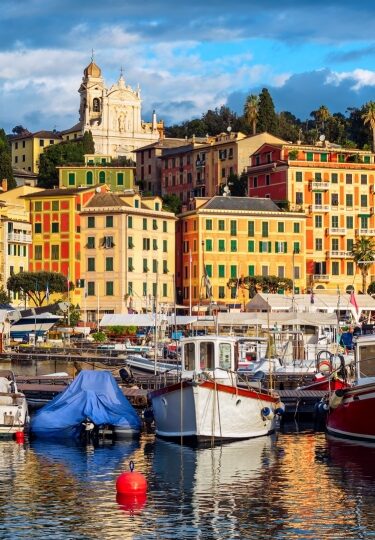The destination of Santa Margherita, Italy, is as good a reason as any (if one is even required) to visit the sun-soaked, sea-splashed, bougainvillea-brilliant Italian Riviera. Known as “Santa” to its suntanned locals, it’s a mirage of pastel perfection for boats navigating towards its shores.
A Ligurian fishing village-turned-coastal-resort, Santa Margherita is located on perhaps the most famous stretch of the Riviera. With chic Portofino a short stroll to the south and buzzy Rapallo to the north, Santa Margherita offers all the best parts of the Riviera, but with slightly less footfall.
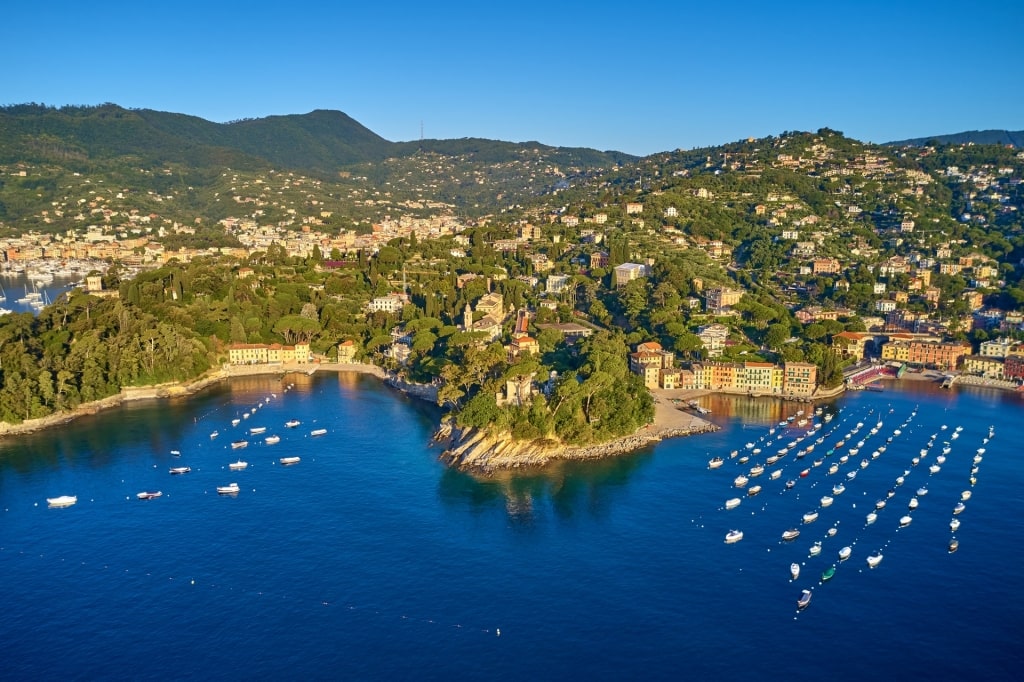
Santa Margherita
Ensconced within lush hills punctuated by stout villas as colorful as the shirts billowing on the old-fashioned promenade, Santa Margherita is an easygoing town, comfortable in its own skin.
Out in the Gulf of Tigullio on which Santa Margherita sits, superyachts slink into view. The nearby National Park of Portofino and the Marine Reserve of Portofino ensure wonderful biodiversity above and below the undulating shimmer of the Ligurian Sea.
History & Culture
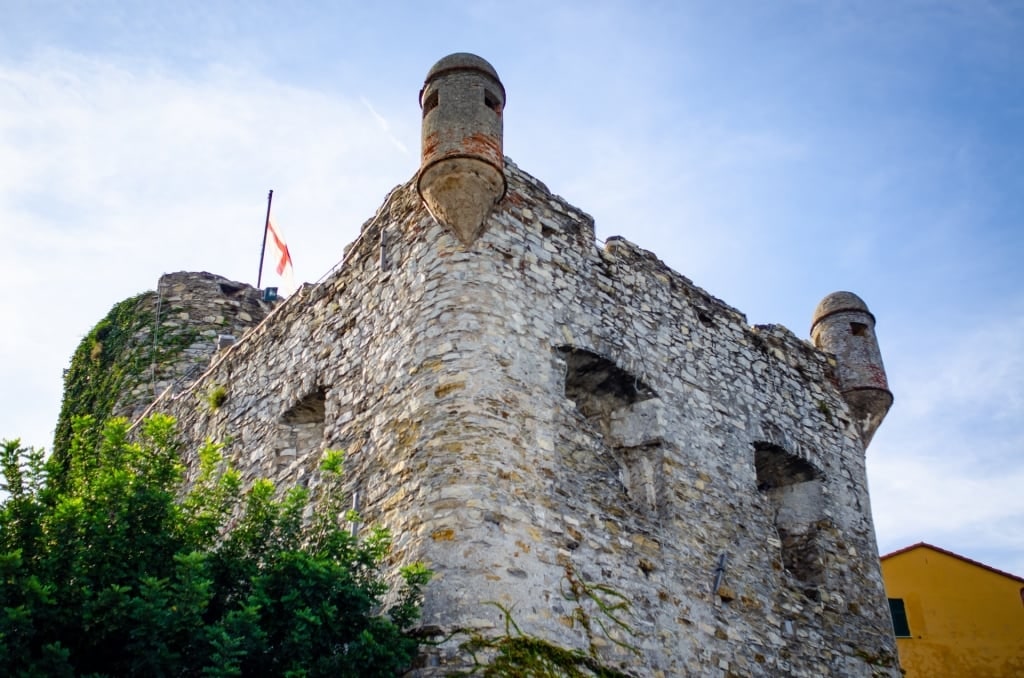
Castello di Santa Margherita Ligure
It’s hard to imagine Santa Margherita, Italy, with its calm harbor and punchbowl colors, to have had a tumultuous past. However, as the turrets of the Castello di Santa Margherita Ligure by the water testifies, it hasn’t all been plain sailing.
In the early medieval period, the Ligurian coastline suffered from repeated raids by Barbary pirates sailing up from the North of Africa. With Santa Margherita part of the Republic of Genoa, one of the richest city-states of the time, hostile incursions by rival city-states such as Venice were common. Centuries later, the area fell under the control of Napoleon I.
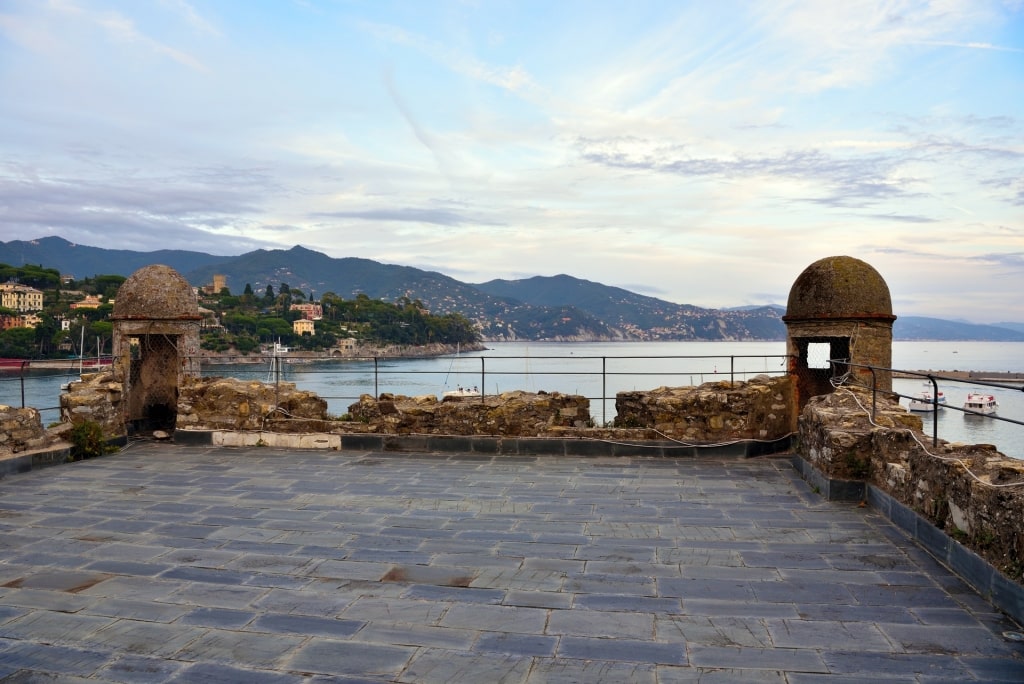
Castello di Santa Margherita Ligure
In 1861, it became a part of unified Italy. However, Santa Margherita’s true moment came when the Genoa to Pisa train line reached the town not long afterward.
The reputation of the Gulf of Tigullio’s natural and architectural pulchritude spread like wildfire, and mid-20th-century sun seekers arrived in droves. Picking up tasseled room keys at Santa’s grand hotels were famous names such as Friedrich Nietzche, Laurence Olivier, and Vivien Leigh, among many others.
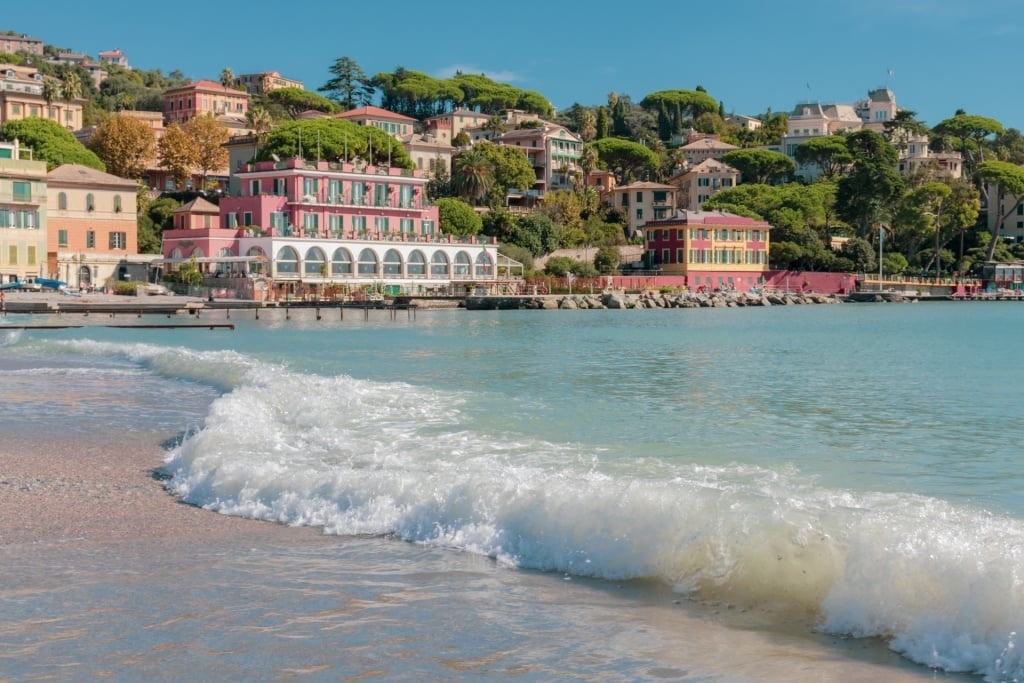
Santa Margherita
Today, Santa Margherita is often viewed as a superb base from which to explore the headline sights of the Italian Riviera thanks to its location west of the Cinque Terre fishing villages and just east of the Ponente Riviera.
The town itself is probably most like its neighbor Camogli—a more low-key gem of the Riviera, a place where people actually live rather than simply a picturesque arrangement of high-end vacation homes.
And while many of Santa Margherita’s fishing dynasties have made the move into tourism, life on the water remains uppermost in the Sanmargheritesi’ consciousness. The Gulf of Tigullio is a sailing and rowing epicenter, especially in the spring. Arrive early May, and you’ll see the view brightened by billowing spinnakers during the high-profile Coppa Carlo Negri.
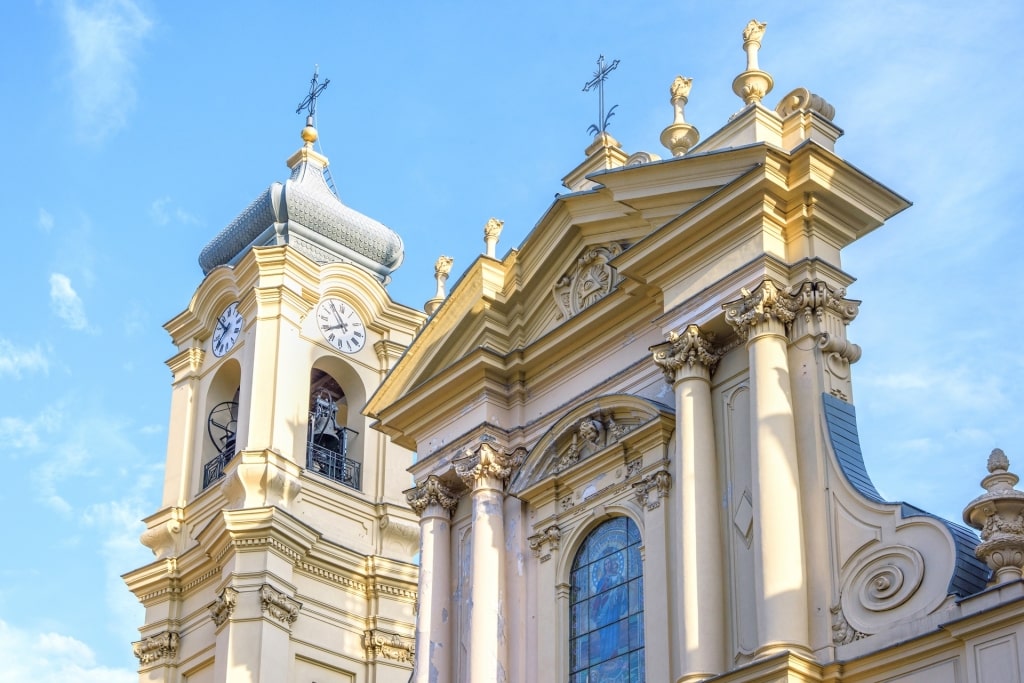
Basilica di Santa Margherita d’Antiochia
Beyond the yacht club glamor, the soul of the village resides in the hushed interiors of its churches, amid the flickering banks of votive candles. Although, even here, there’s a kind of glamor to the 17th and 18th-century baroque architecture, especially in the central Basilica di Santa Margherita d’Antiochia.
Tips for Visiting Santa Margherita, Liguria
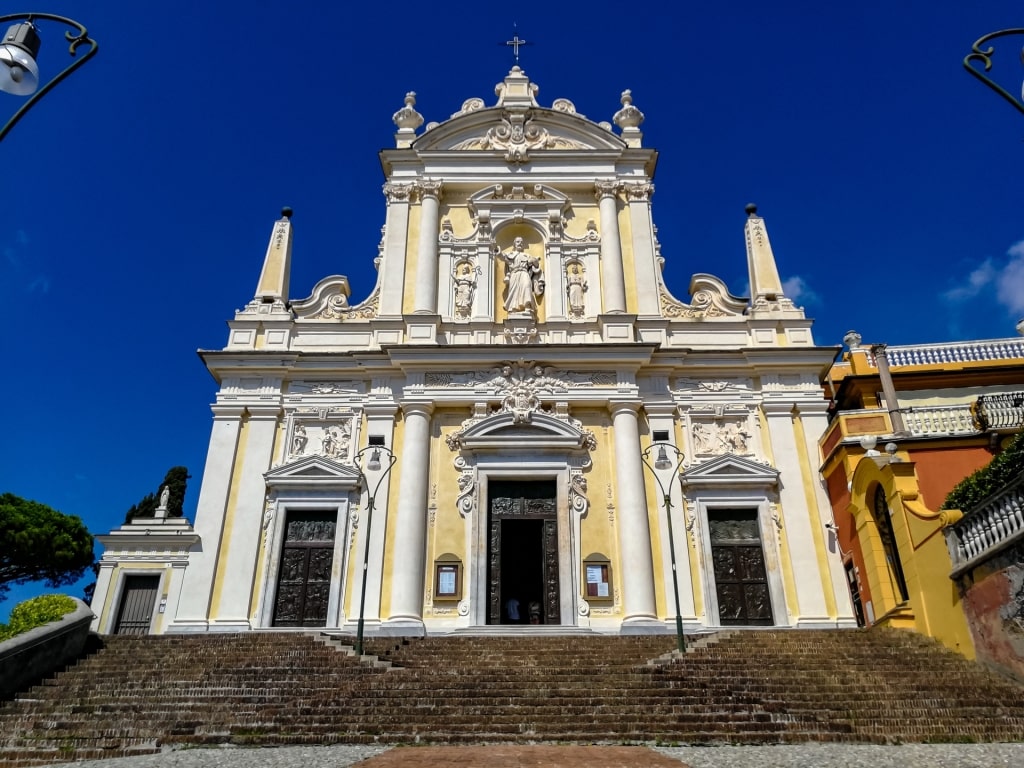
San Giacomo di Corte Church
With its supreme seaside location and 300 days of sunshine, Santa Margherita’s colors burn brightest in the summertime.
Get your bearings with a walk up Salita San Giacomo for panoramic views over the harbor and the town. At the top, you can also get a flavor of Santa Margherita’s penchant for the baroque inside San Giacomo di Corte Church. This section of town used to be the hamlet of Corte which, when it unified with another hamlet, Pescino, formed Santa Margherita.
Alternatively, just make a beeline for the water.
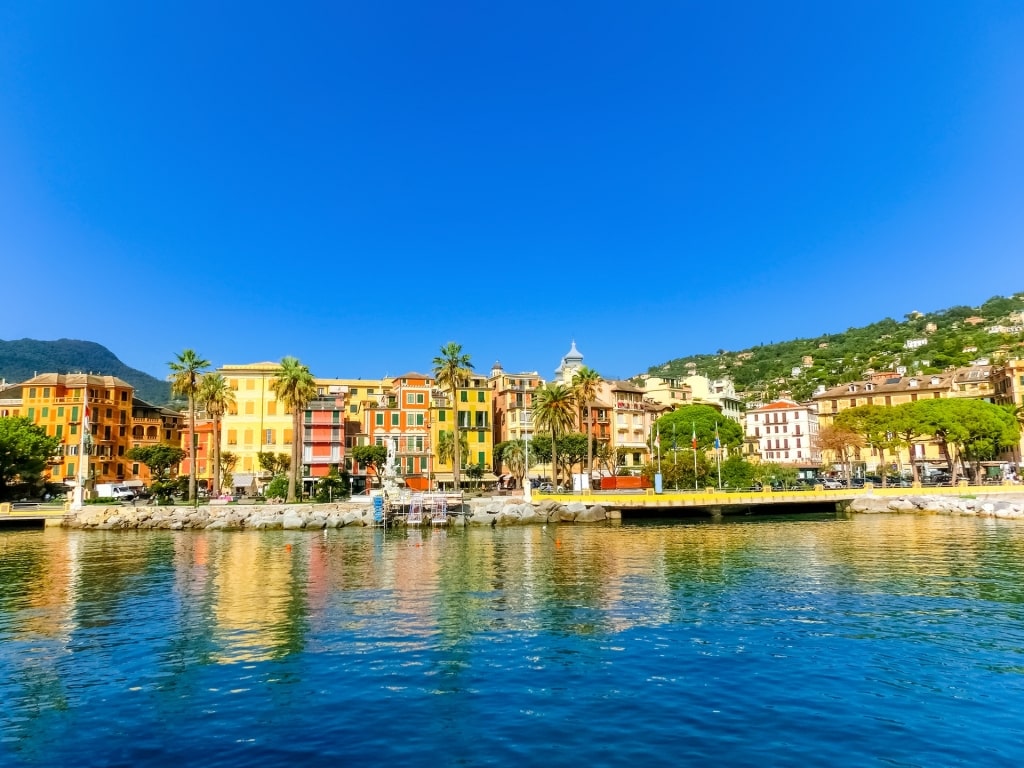
Santa Margherita promenade
Stroll beneath the palms of the Santa Margherita promenade taking in the turquoise gozze (traditional fishing boats) and the clap of the rigging on the sailboats moored in the harbor. Walk along the pebbly beachfront, admiring the colors of the bars and restaurants, with the hotels ornamented in art deco flourishes sitting pretty at the north end of the beachfront.
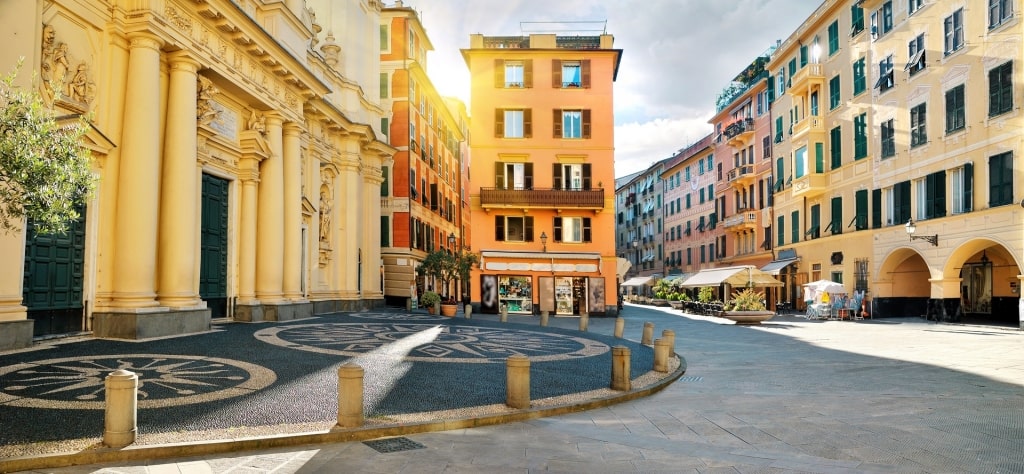
Santa Margherita
Turn south towards the hubbub and briny scent of the daily fish market on via Marconi to narrow down what you’ll order for lunch. Or wander the backstreets, admiring tall green-shuttered buildings—classic Liguria—the ground floors of their lemon-yellow facades hidden behind a bloom of sun umbrellas shading espresso drinkers at cafe tables.
If you’re visiting on a Friday, make your way to Corso Matteotti—home to one of the best markets in Italy—to find everything from sunglasses to sun-dried tomatoes.
Things to Do & Attractions in Santa Margherita
Visit the Basilica di Santa Margherita d’Antiochia
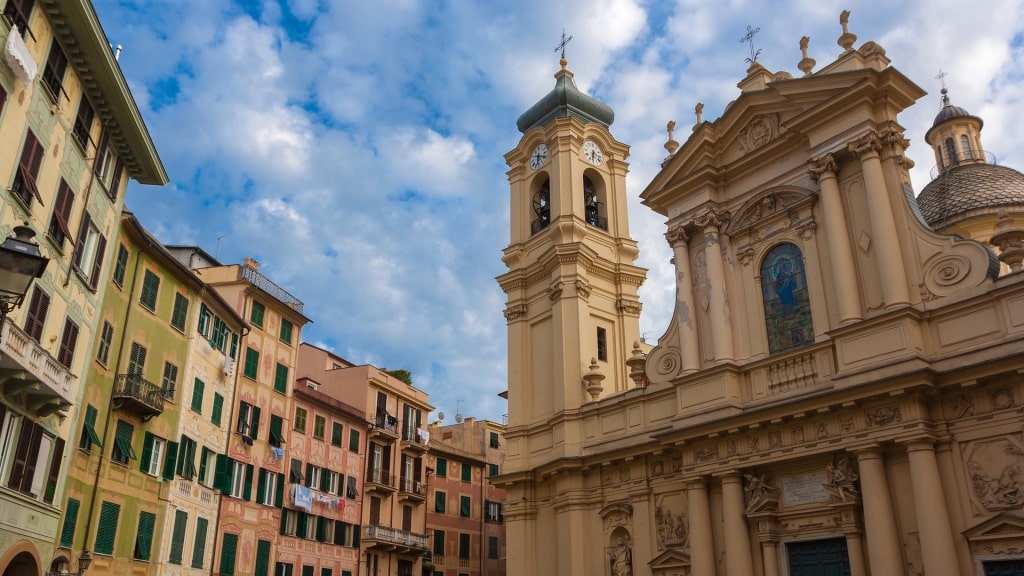
Basilica di Santa Margherita d’Antiochia
Set back behind the waterfront in the main square of Piazza Caprera is the Basilica di Santa Margherita d’Antiochia, its immense baroque facade dominating the square. Its ornate exterior promises much and delivers within.
Once your eyes have adjusted from yet another cloudless Ligurian summer’s day, you’ll probably catch your breath. Within is enough gilding amid its sparkling chandeliers and Corinthian columns to give the Queen of England pause.
Beyond the bling, you’ll find some outstanding post-Renaissance paintings by Genoese masters as well as religious frescos and stuccos, but, for the populace at least, the real treasure is the Madonna del Rosaria on the altar. This wooden figurine is believed by the Sanmargheritesi to hold miraculous powers to heal the sick, children in particular.
Explore a 14th-Century Abbey
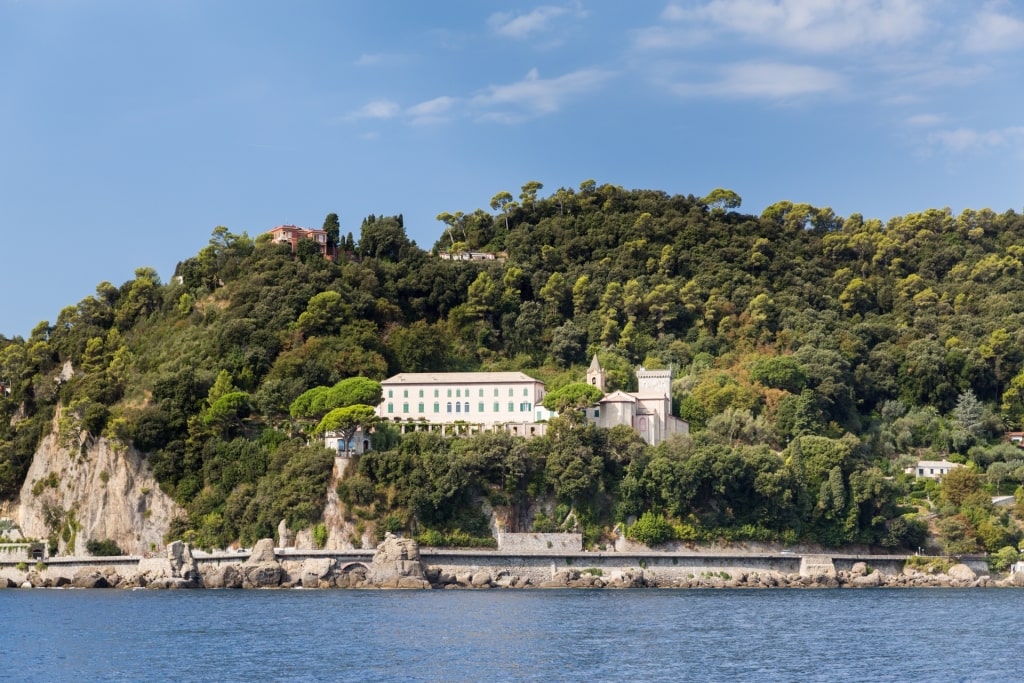
San Gerolama Abbey
Another significant holy place, found just north of Paraggi on the road to Portofino, is the San Gerolama Abbey or “La Cervara”. Built in 1361 on Monte di Portofino, this restored Italian National Monument offers tours taking in the monastic complex as well as the exquisite Italian-Renaissance style garden, the only one of its kind in the entire Riviera.
Of particular interest in La Cervara is the tower where King Francis I of France was forcibly lodged after he was defeated at the Battle of Pavia (“All is lost, save honor”, he famously wrote to his mother). Make it a stop on the easy three-mile walk to Portofino along the coast, about an hour one-way at a leisurely pace. There’s a return bus service available.
Admire An Ornamental Garden
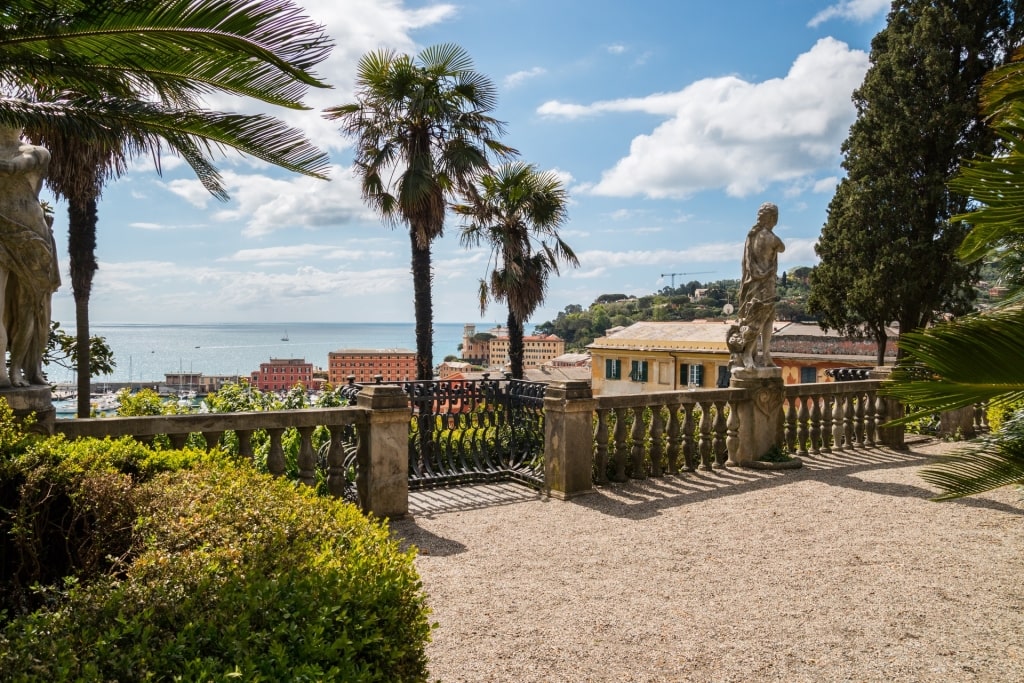
Villa Durazzo
Near to San Giacomo di Corte Church in Santa Margherita, Liguria, is Villa Durazzo, one of the most romantic places in Italy. This now publicly owned property contains two villas and a 16th-century castle. Within this pink palace it’s all Murano glass chandeliers and glowing frescos that no doubt helped convince Rod Stewart it was just the place to marry Penny Lancaster.
But what draws most people to Villa Durazzo are the lush and extensive gardens overlooking the Gulf of Tigullio and celebrated as one of the official “Great Italian Gardens”. Broken into four separate smaller garden areas, the geometrical Italian Garden is probably the most famous with its rare cycads, box hedges, and fulsome camellias.
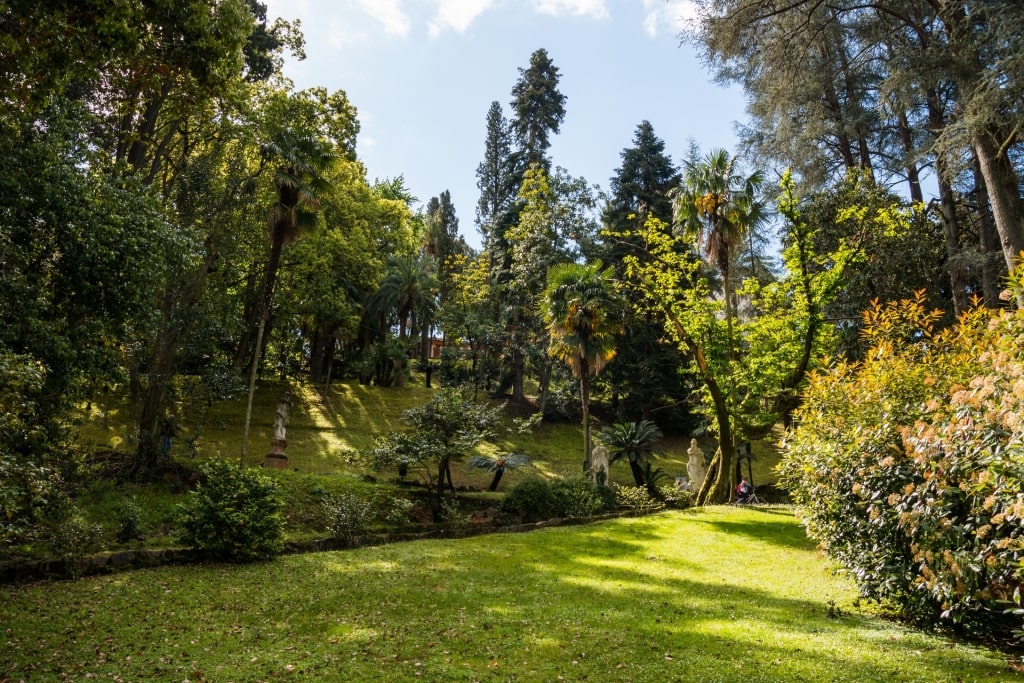
Villa Durazzo
At Villa Durazzo, there’s also the less regimented Romantic English Wood. It’s a scented slalom of pine trees, limes, camphor, cypresses, and holm-oaks. The citrus plantings surrounding the terraces are in the garden’s oldest section, and you’ll also find a café there.
Read: 13 Breathtaking Medieval Castles in Europe to Visit
Boat, Hike & Swim
Beyond Portofino, and a 40-minute ferry ride from Santa Margherita, you’ll come to the Abbey of San Fruttuoso with its distinctive octagonal tower. The boat rounds the Portofino Peninsula to see the arches of this white stone abbey as if it’s resting its elbows on the beach and gazing out to sea.
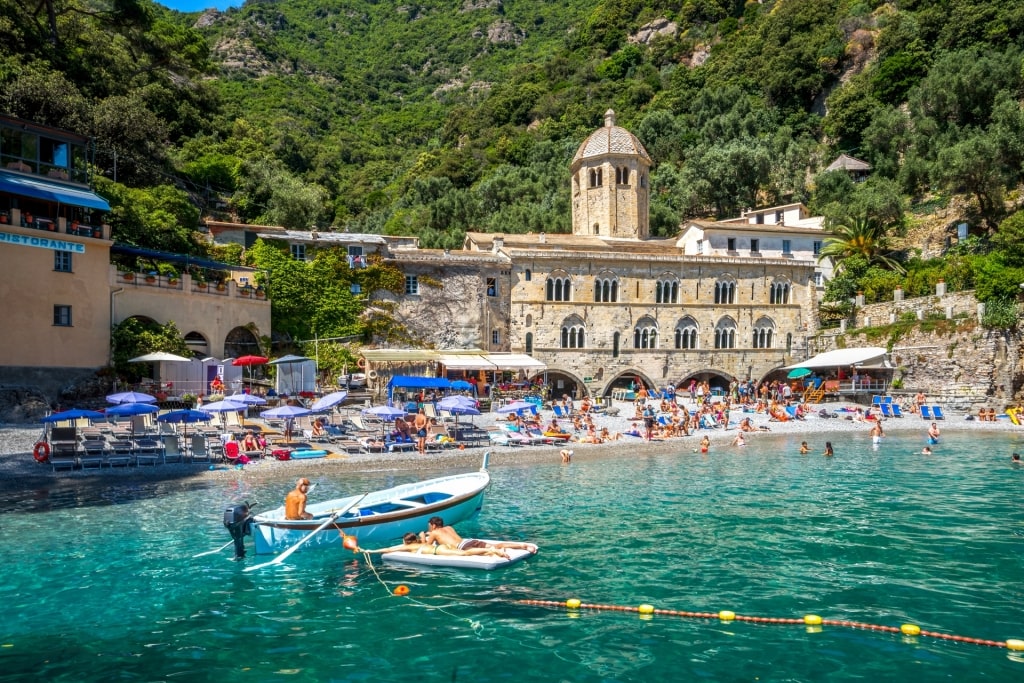
San Fruttuoso
It’s possible to explore the restored 10th-century buildings, although you’ll just want to find a corner of that gorgeous little beach to call your own and go for a swim. There’s also a sunken bronze statue, “Christ of the Abyss” just offshore for the more adventurous snorkelers.
You can also hike to San Fruttuoso, taking the mile-and-a-half-long trail that starts at Pietre Strette. It’s steep, with plenty of switchbacks, although blessedly shady beneath the oak woods. Rumor has it that the singer Madonna does a pilgrimage of sorts to San Fruttuoso along this route every year. This Italian hiking trail is perfect for working up a sweat before a cleansing dip in the Ligurian Sea.
Bask on Beautiful Beaches
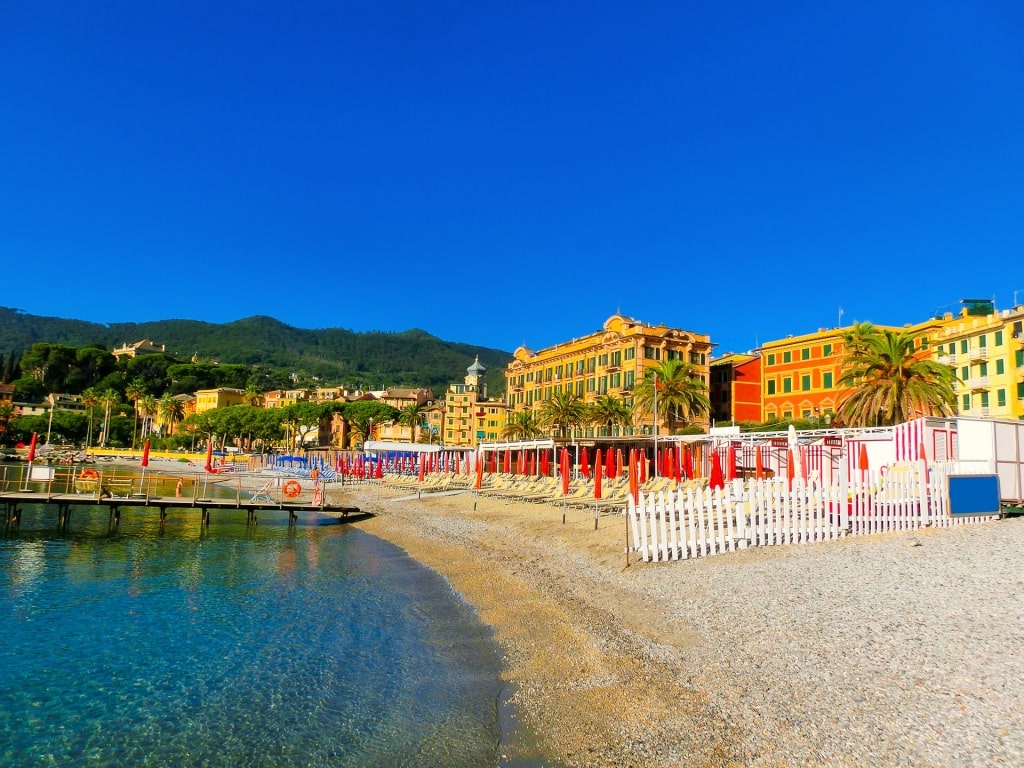
Santa Margherita Beach
Santa Margherita’s central beach is spacious but it does get busy in high season. You’re better off paying for space at the beach club just a little south of Central Bagni. This is typical of Italy’s beaches, which are a mix of public and private, the private stretches coming with more facilities.
You’ll find a series of beaches to the south of the harbor, some public, some private. Giò e Rino Beach is arguably the best, with good swimming, loungers, and ice-cold Peroni.
Food & Drink
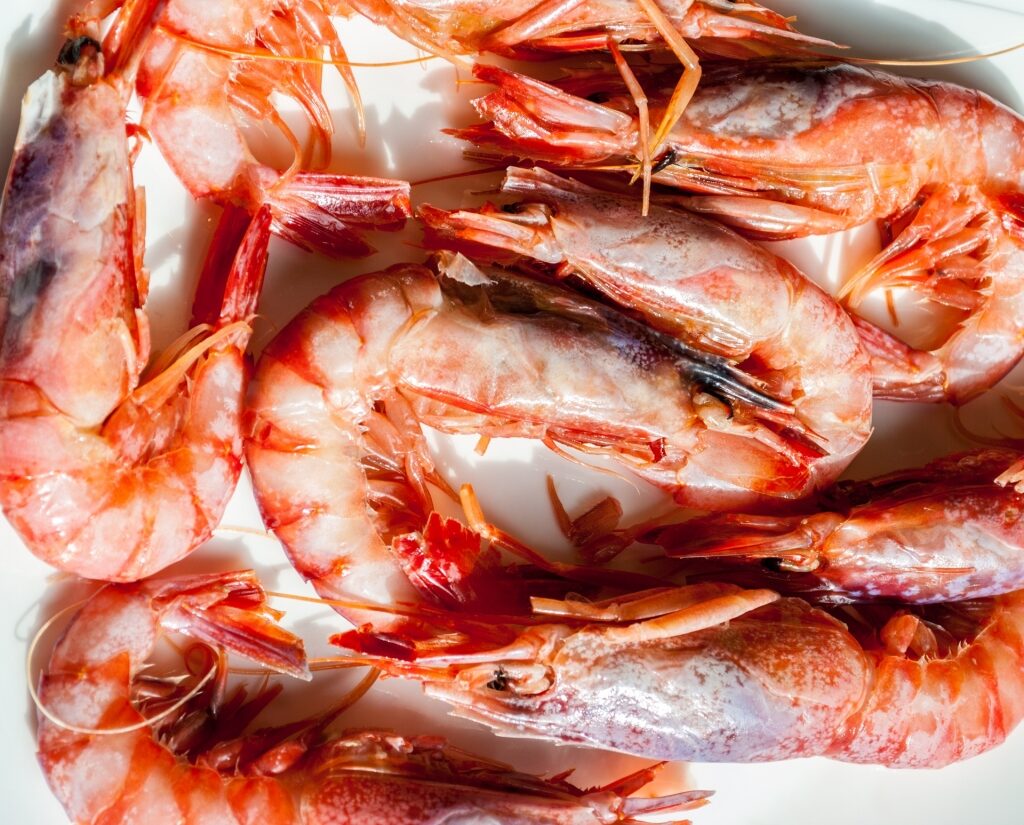
Red shrimp
Santa Margherita is known, above all else, for its red shrimp. Succulent and sizable, with colors ranging from sunrise pink to a bluey-violet, you’ll find them barbecued, tossed in linguine, or served raw on all the best menus in Liguria. The darker the shrimp, the more delicious. And it’s up to you whether you suck the shrimp head in the Italian fashion.
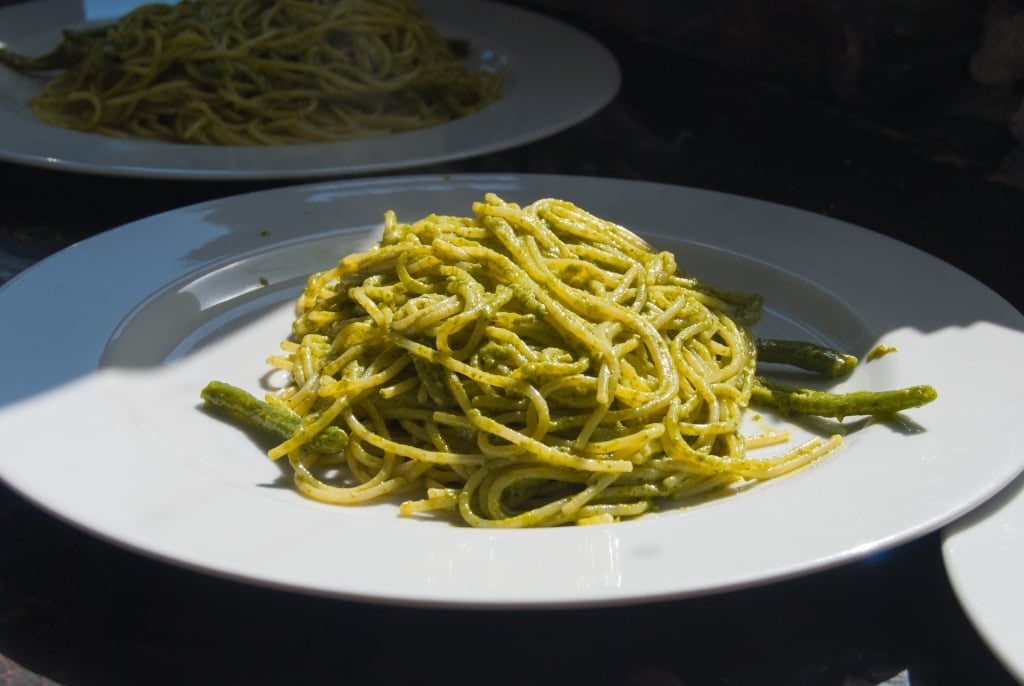
Pesto pasta
With Genoa a short drive west, you’ll find Genovese cuisine well represented throughout the restaurants of Santa Margherita and Rapallo. Look for dishes such as pesto pasta, ravioli Genovese with slow-cooked brisket sauce, and, of course, the focaccia.
Pinamonti on Largo Giovanni Amendola is the stop for life-changing focaccia al formaggio. And try Da’ Gennaro, near the waterfront, for down-to-earth go-to for regional classics (and pizza).
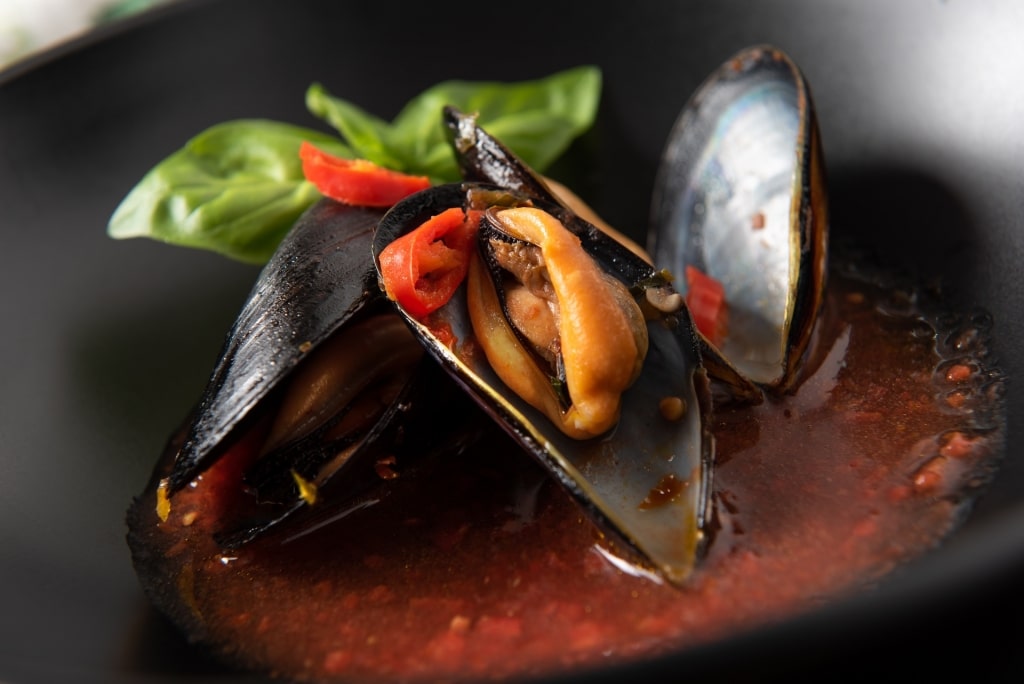
Mussels
With the gorgeous Gulf of Tigullio before you, there’s an abundance of fresh fish dishes. The Ligurians have a serious obsession with mussels, so expect to find a plethora of preparations, or simply—perfectly “alla marinara”. Splash out on Zi’ Ninella, set just in the backstreets behind the harbor, for a tasting menu of reworked classic flavors. Squisito.
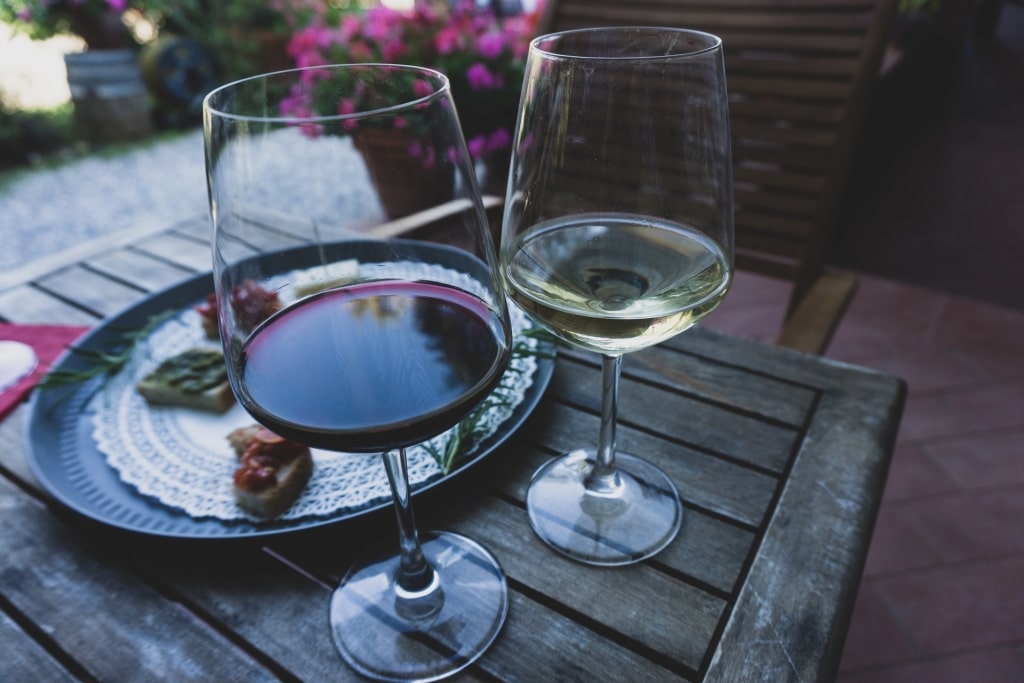
Wine
In this area, with Cinque Terre nearby, the delicately floral Cinque Terre DOC pairs well with your flavorful plate of triglie alla Genovese. Also produced nearby is Sciacchetrà—a delicious “vino passito”, or sweet wine. A glass marries beautifully with the Ligurian Sacripatini—a dessert of genoise sponge with rich zabaglione filling.
Beneath the arches lining the tropically lush Piazza Martiri Della Liberta, you’ll find a number of good aperitivo spots. Lively Sabot, with its red leather banquettes, is excellent for a pre-prandial Aperol Spritz. Or find a space at stylish Vernissage for views over the harbor while the evening skies become streaked with lilac and magenta.

Krapfen alla crema
In the morning, stop by Pasticceria La Viennese for their extremely popular Krapfen alla crema (a donut filled with creme patisserie). It’s a Sanmargheritese (via Austria) “breakfast of champions”.
Weather & Climate
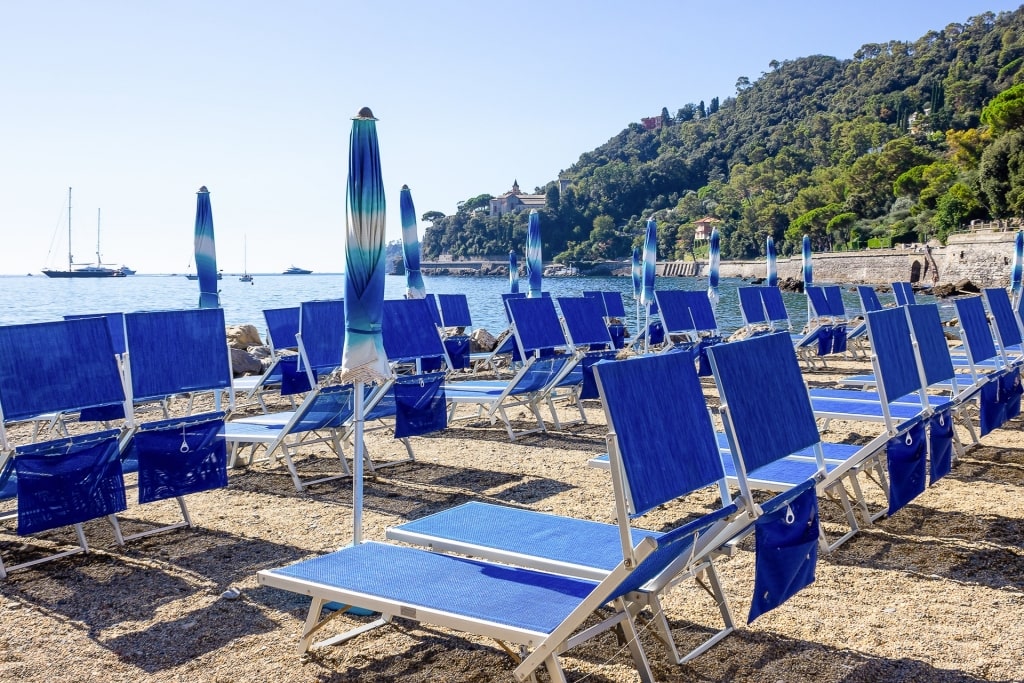
Santa Margherita
The Italian Riviera didn’t earn its reputation by serving up suspect weather patterns. It has a reliable 300 days of sunshine a year. The coastline is angled towards the equator and the maritime Alps help to shelter Liguria from heavy weather patterns.
In the Riviera in May, the daytime temperature edges up to 68°F. After that it just keeps climbing, peaking in July and August at a delightful 80°F. At the coast, the gentle sea breezes help to keep the soaring Mediterranean temperatures well within the tolerable range.
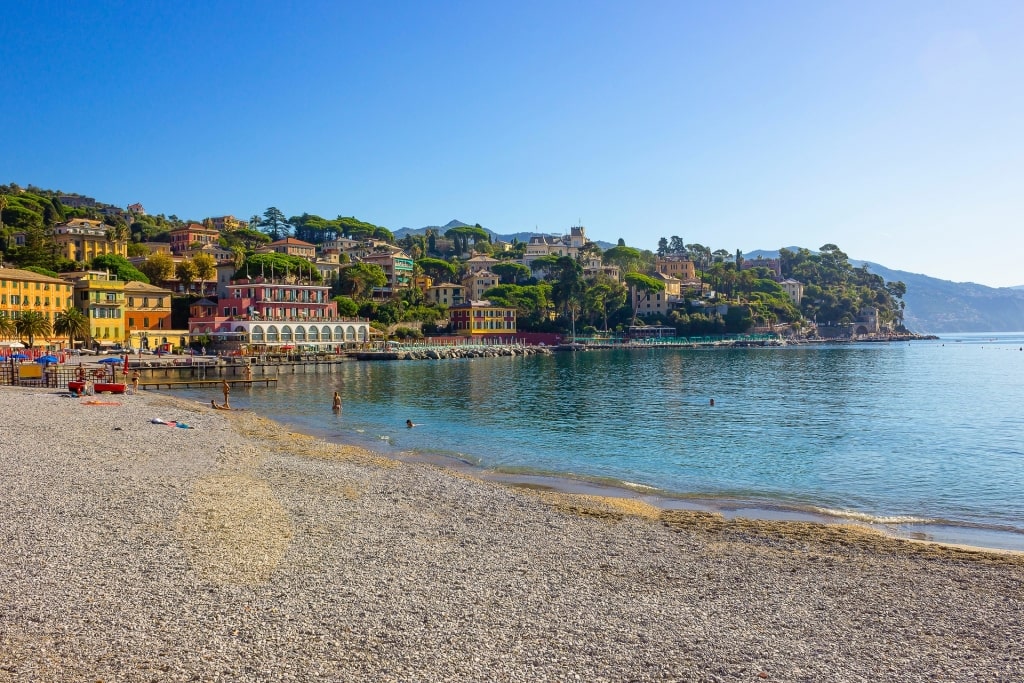
Santa Margherita
Finding it too hot? Then it’s time for a dip in the translucent, turquoise-tinted sea which, at that time of year, has a water temperature of 73.4°F. The weather stays balmy into September with highs of 77°F, although be aware that there can be the odd rain shower outside of the drier months of June and July.
A perfect excuse to rush inside for grilled shrimp and a glass of Cinque Terre DOC. But, then, who needs excuses?
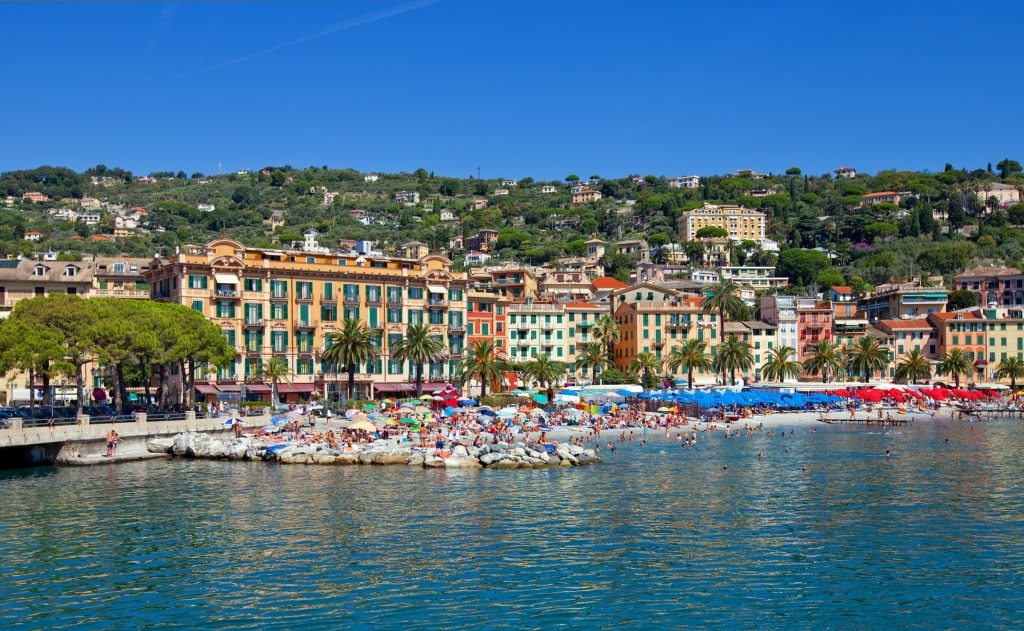
Santa Margherita
Experience the grandeur and grace of the Italian Riviera on a cruise to Santa Margherita. Browse our cruise itineraries online and book an Italian vacation that’ll linger long in the memory.
